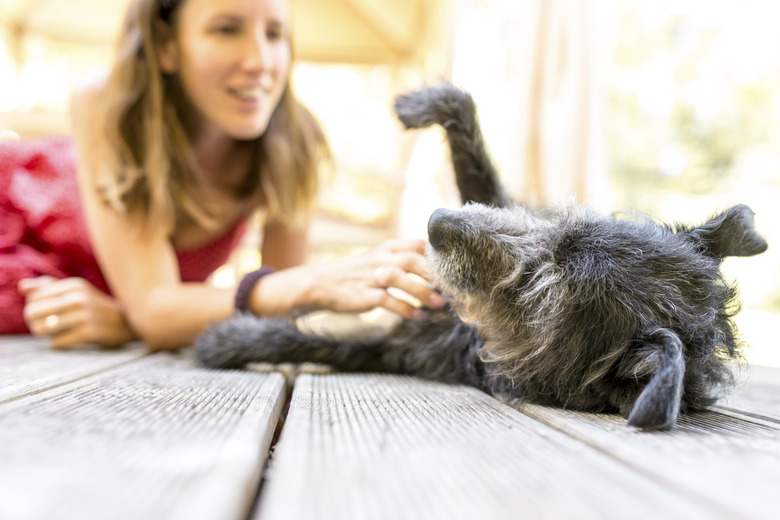Lice Vs. Fleas? How To Tell The Difference Between Lice & Fleas
Sooner or later, most pet owners will find themselves dealing with fleas on their cats or dogs . . . or are they lice? Both lice and fleas can affect cats and dogs and, unfortunately, their homes too. It's important to know the difference between dog and cat lice vs. fleas to determine the best ways to get rid of them.
Fleas vs. lice on dogs and cats
Fleas vs. lice on dogs and cats
Many pet owners think their dogs or cats have fleas when they are actually lice. While they are treating their pets for fleas, the lice are multiplying, and the bewildered owners wonder why no treatment seems to make a difference. Many treatments that work for fleas do not work on lice and vice versa.
There are some quick ways to identify dog and cat lice vs. fleas:
- Fleas are dark brown, almost black. Lice are tan to yellowish.
- Fleas can jump. Lice can crawl very fast, but they cannot jump.
- Fleas are 1 to 4 millimeters long, while lice can grow to be 4.5 millimeters.
- Lice glue their off-white to tan eggs (nits) on hair shafts near the scalp. Nits cannot be shaken off, whereas flea eggs fall onto the floor easily, are white, and are hard to see in the home.
Finding fleas and lice on dogs and cats
Finding fleas and lice on dogs and cats
To look for lice and fleas on cats and dogs, separate the animal's hair so you can see the skin and look for the pests, which can measure from the size of a pinhead to a sesame seed. Both fleas and lice bite, so look for reddened areas on the skin, patches of crusty skin, and hair loss, especially where the animal has been scratching.
Examine the individual hair shafts for nits, which are found close to the skin. Since nits are white or tan/yellow, they can be hard to see in animals with light-colored fur. Lice and their nits are generally easier to spot on dark brown or black fur, so if your pet has several colors of fur, check the dark-haired areas first. Conversely, since fleas are dark brown/black, they may be easier to see on light-haired animals.
If you have both cats and dogs and both are scratching intensely, the culprits are most likely fleas. Lice are species specific, meaning lice that infest cats are not the same as the lice that affect dogs. So, lice aren't likely to crawl from dogs to cats or from cats to dogs. Fleas, however, affect both cats and dogs and can jump from one to the other.
Using flea vs. lice combs
Using flea vs. lice combs
Flea combs and lice combs are very similar, with metal teeth spaced very closely together so they can pick up the tiny insects. Combs will not kill lice or fleas but will pull up the dead ones after a treatment has killed them. If you already have a flea comb, you can use it for lice. Even a lice comb will not pull off nits, however, because they are glued so strongly to the hair shaft. Lice kits usually contain a nit softener that dissolves the glue so you can then comb out the nits.
Many products are toxic to cats
Many products are toxic to cats
Consult your vet before using any insecticide product on your dog or cat. Although many over-the-counter treatments are effective against fleas and lice, some are extremely dangerous for cats. Products intended for dogs should never be used on cats. Before using any treatment on either dogs or cats, including homemade mixtures, consult your vet about its safety and effectiveness. Although many people are convinced that one homemade treatment or another works well, some may work better on one animal than another, and none has been found to fully eradicate fleas or lice.
Check with your vet about kittens and puppies
Check with your vet about kittens and puppies
Kittens and puppies should not be treated with over-the-counter or homemade mixtures without first checking with your vet. The risk of being harmed by some of the ingredients is much greater for puppies and kittens, and they must be old enough and healthy enough to handle treatments. If your vet gives you the OK to treat them, be sure to keep them warm until they are dry after a bath since they have difficulty regulating their body temperature when they are young.
References
- Pediaa: Explore: Difference Between Lice and Fleas
- Merck Manual Veterinary Manual: Lice of Cats
- Shelter Medicine Program: What is the Best Course of Action for Lice on Kittens?
- American Kennel Club: Dog Lice: What They Are, How to Avoid Them
- NBC News: How to Get Rid of Fleas, According to Veterinarians
- Companion Animal Parasite Council: Fleas


